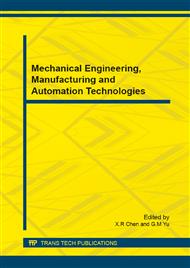p.390
p.396
p.400
p.405
p.409
p.413
p.419
p.423
p.426
Numerical Simulation of Forward Green Supply Chain
Abstract:
The forward green supply chain consisting of the manufacturer and retailer is as the background. The Game Theory is used,and two kinds of green supply chain game models are set up: the Centralized decision-making model, and the Manufacturer-leading Stackelberg game model.Then we carry out numerical simulation.We find that (1)With the increase of green level of green products, the market price of green product is increasing, the profit the manufacturer and the retailer are also increasing;(2)The manufacturer and the retailer will benefit from that consumers have strong environment consciousness.So we suggest the manufacturer and the retailer should cooperate to produce higher green level of products.
Info:
Periodical:
Pages:
409-412
Citation:
Online since:
December 2014
Authors:
Keywords:
Price:
Сopyright:
© 2015 Trans Tech Publications Ltd. All Rights Reserved
Share:
Citation:


